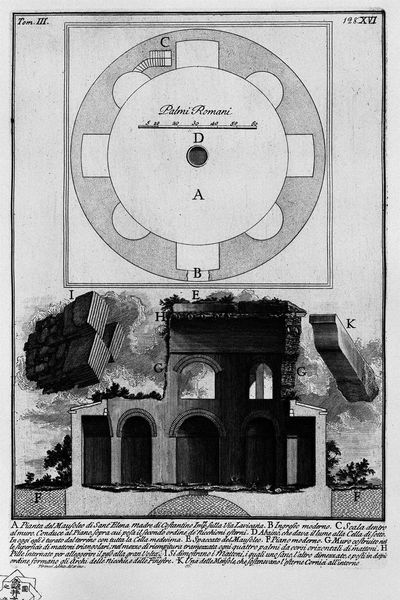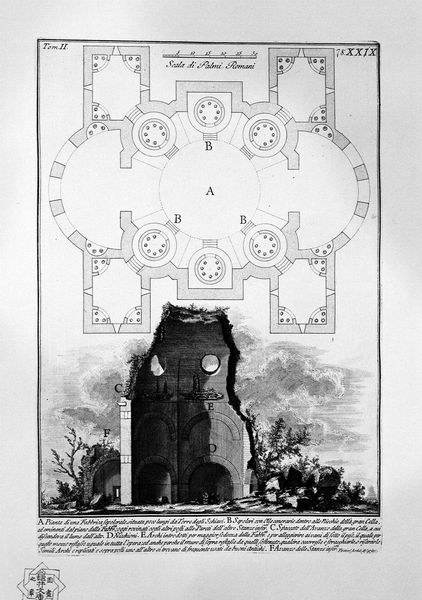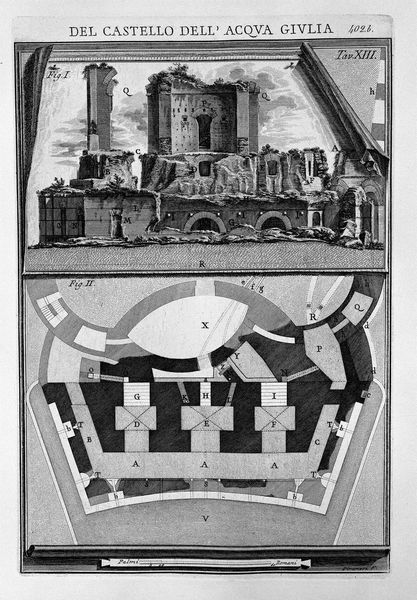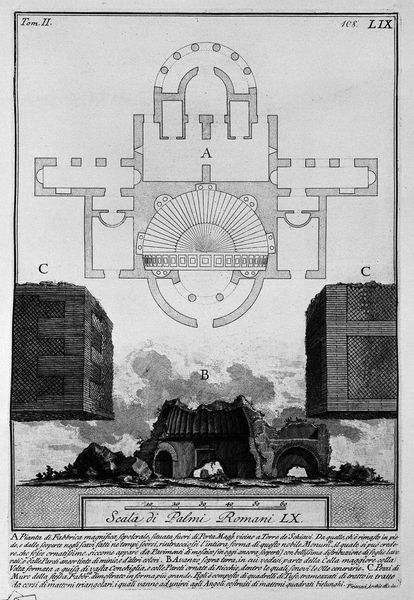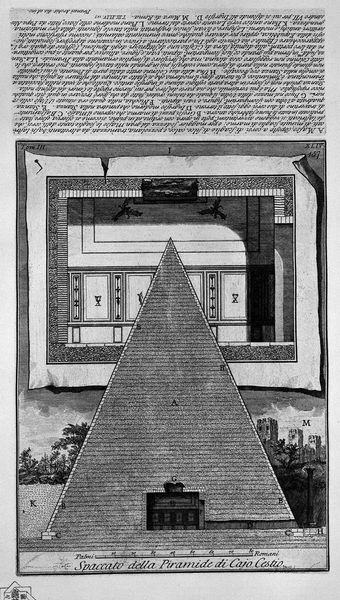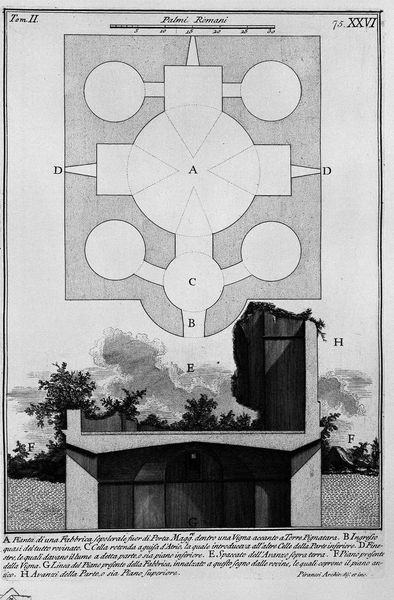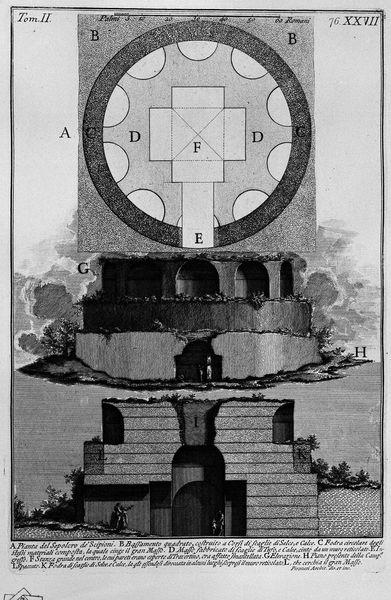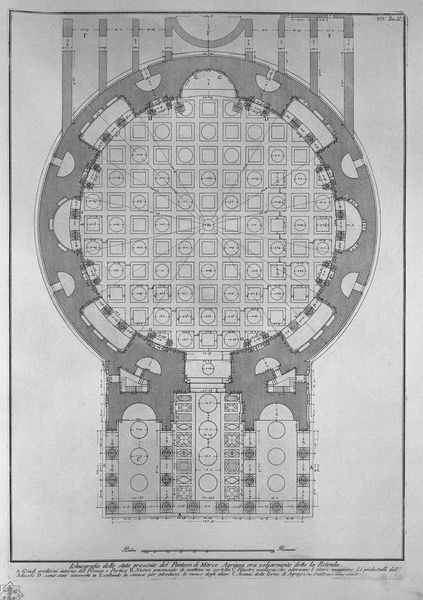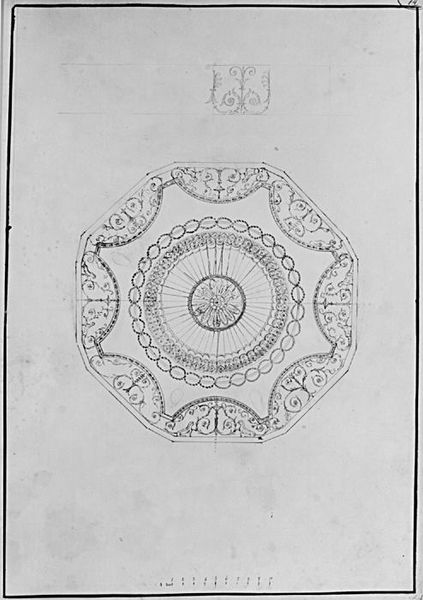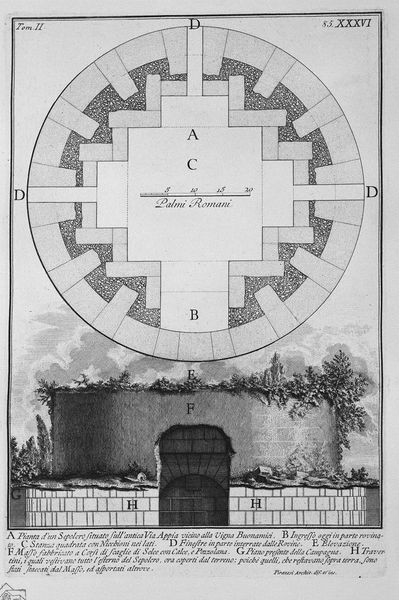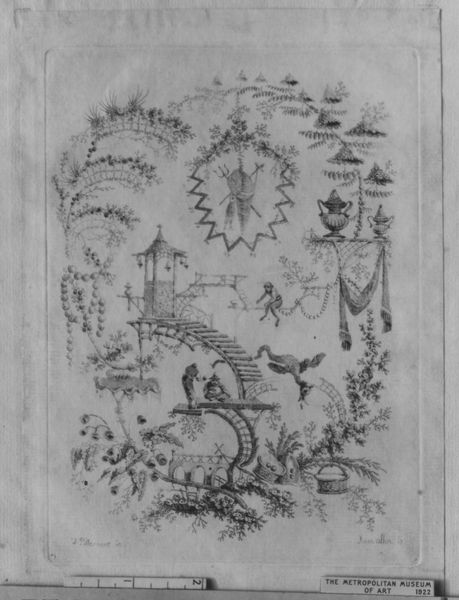
The Roman antiquities, t. 2, Plate VI. Following the above table. 1756
0:00
0:00
drawing, print, etching, engraving, architecture
#
drawing
# print
#
etching
#
landscape
#
romanesque
#
geometric
#
arch
#
line
#
history-painting
#
engraving
#
architecture
Copyright: Public domain
Curator: This engraving, "The Roman Antiquities, t. 2, Plate VI. Following the above table" by Giovanni Battista Piranesi, made in 1756, presents an architectural rendering. What's your initial impression? Editor: Well, looking at it, it feels very precise and almost sterile. The line work is so clean, depicting this Roman ruin with a clinical quality, despite the hint of landscape around the structures. What do you see in this piece? Curator: I see a meditation on the labour inherent in both creation and decay. Piranesi meticulously reproduces the design and form, but simultaneously highlights the consumption of labor and materials by time and the elements. Notice how he renders the crumbling structures alongside the geometric precision of the architectural plan. This tension underscores the relentless cycle of construction and destruction. Editor: So, the artistic work of creating the engraving highlights, in a way, the building and the unbuilding? Curator: Precisely. The very act of meticulously etching this image – the labour-intensive process – points to the immense work that went into the original Roman construction, but also the social forces, like economic shifts or even war, that led to its disuse and dilapidation. Consider the paper itself, and the economics of printmaking at the time: this image circulated to fuel a fascination with Roman grandeur, contributing to a culture of consumption of the past. What do you make of the artist including textual keys and description? Editor: It makes it very informative, but maybe also directs your interpretation. I like how you brought the materials to the forefront—the print, the etching, how all this influences what we perceive and how. Curator: Ultimately, this work isn't just about aesthetics; it's a document of the social life of materials, labor, and the enduring fascination with history. Editor: That's a perspective I hadn't considered. It certainly offers a richer appreciation of Piranesi's work.
Comments
No comments
Be the first to comment and join the conversation on the ultimate creative platform.
